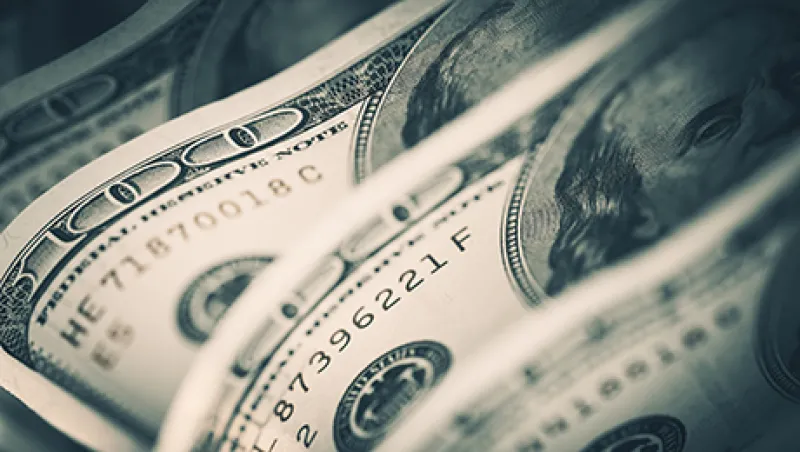The dollar’s recent rise was interrupted by last month’s news of weak U.S. economic growth, but many analysts say U.S. fundamentals remain strong and the greenback is poised for fresh gains.
The U.S. economy expanded at a rate of only 1.2 percent in the second quarter, well short of economists’ forecasts of about 2.5 percent. But much of the decline stemmed from falling inventories. With consumer spending rising steadily, inventories could rebound in a hurry, analysts say. The prospects for continued consumer strength were buttressed by the Labor Department’s August 5 report that nonfarm payrolls rose by 255,000 in July.
“The story remains one of bad things there and good things here,” says Marc Chandler, global head of currency strategy at Brown Brothers Harriman in New York.
The bad things abroad include the U.K.’s decision to exit the European Union, which many analysts think will push the British economy into recession, and continued sluggishness in the euro zone and Japan. Euro area gross domestic product rose 1.6 percent year-over-year in the second quarter, whereas Japan’s GDP expanded at an annual rate of 1.7 percent in the first quarter.
Although the dollar rallied strongly between 2011 and 2015, its record of late has been mixed. Many analysts and investors predicted further gains at the start of this year, only to see the U.S. currency weaken as expectations of additional rate hikes by the Federal Reserve vanished. Problems elsewhere, most notably the Brexit referendum shock, have helped spark a rebound. The Fed’s trade-weighted dollar index has rallied 3.5 percent since May 2, but it remains 4 percent below its level at the start of the year.
Among major currencies, the euro has dropped 4 percent since May 2, to $1.1084, and the pound has plummeted 12.3 percent since the June 23 Brexit vote, to $1.3041. The dollar has also gained steadily against the Chinese yuan, rising 2.8 percent since the end of March, to 6.6360 yuan, as Beijing has guided the currency lower to spark exports and growth. The yen has bucked the trend, however, acting as a safe haven amid financial turmoil. The dollar has slid 3.7 percent against the Japanese currency since May 2, to 102.45 yen. Many emerging-markets currencies have also risen sharply against the dollar this year, thanks to the Fed’s refraining from further tightening.
Optimism about the U.S. economy and the prospects for rate hikes is growing, though, because of steady job growth and strong personal consumption data in recent months. The GDP report aside, “U.S. data have come in surprisingly well recently,” says Ian Gordon, currency strategist for Bank of America in New York. “We still see one hike this year.”
Gordon predicts the euro will slide to $1.05 by year-end, and the dollar will climb to 105 yen and 7 yuan. He expects the pound to remain around $1.30 through year-end, before slipping to $1.25 in the first quarter of 2017.
On the monetary policy front, analysts expect more easing by the Bank of England, the Bank of Japan and the European Central Bank, which is good news for the greenback. “Central bank expectations are driving a lot of market sentiment, and that’s providing support for the dollar,” says Marvin Loh, senior global markets strategist for BNY Mellon in Boston.
The Bank of England trimmed its benchmark rate by 25 basis points, to a record-low 0.25 percent, on August 5, in a bid to counter a post-Brexit economic downturn. The central bank also announced a fresh round of quantitative easing, promising to buy an additional £60 billion ($78 billion) of government bonds and £10 billion of corporate bonds.
Earlier this month, the Bank of Japan announced an increase in its purchases of exchange-traded funds, and analysts expect more easing in coming months. “They still have secular stagnation, and inflation is very low,” says David Gilmore, partner at Foreign Exchange Analytics in Westbrook, Connecticut. Japan’s consumer prices, excluding food, slid 0.4 percent in the 12 months through May. Although Bank of Japan governor Haruhiko Kuroda has ruled out the idea of helicopter money, he is probably prepared to push interest rates further into negative territory, Gilmore says. The central bank’s benchmark rate stands at –0.1 percent.
As for the ECB, it cut interest rates most recently in March, pushing its benchmark rate to zero for the first time and slashing its deposit rate by 10 basis points, to –0.40 percent. At the same time, it lifted its monthly bond purchases to €80 billion ($89.4 billion) a month. That quantitative easing is scheduled to run through March 2017, but most analysts believe the program is likely be extended. “The ECB is worried about secular stagnation too,” Gilmore says. Euro zone inflation totaled just 0.2 percent in the 12 months through July.
So there’s plenty of reason to believe the dollar will rise. Chandler sees the euro falling to $1.08 by year-end and the pound to $1.27. He also sees the dollar rising to 106 yen and 6.78 yuan.







